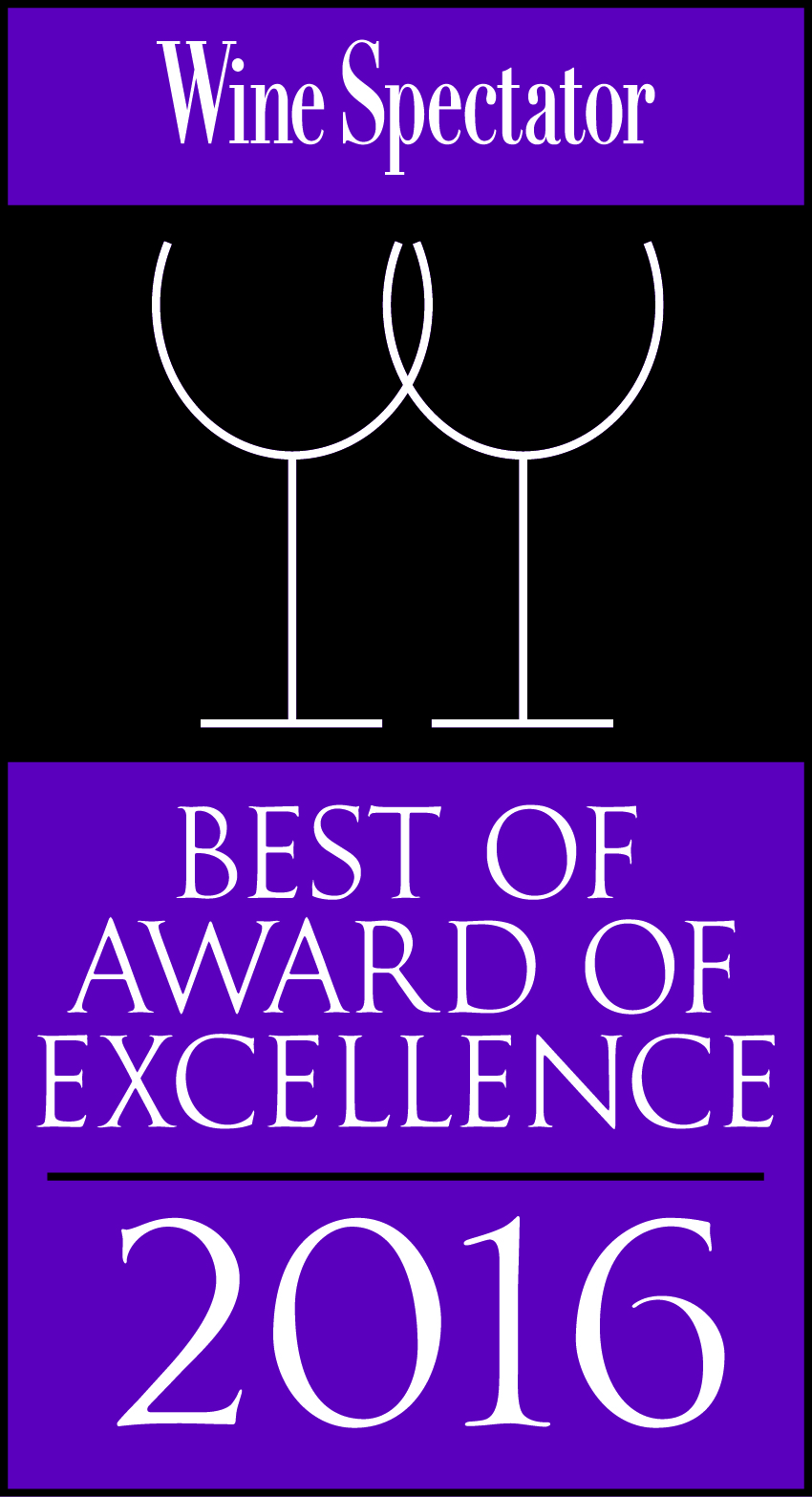Mourvèdre does best in hot, arid climates.
Date: September 25, 2011
Hanes recently attended a big wine event which this year focused on the Mourvèdre grape. This got Hanes thinking about where he stood vis-à-vis Mourvèdre. We all know Hanes thinking is nothing but trouble.
Similar to many grapes which have traveled to various countries and wine regions, Mourvèdre has adopted a few different names. So, it is important to first learn these names so we know which grape we are talking about.
Naturally although most frequently known as Mourvèdre, this is not the grape in question’s original name. Mourvèdre is a grape of Spanish origin, first recognized as a distinct varietal in the 16th century. The primary, most widespread Spanish name for the grape is Monastrell. The third most popular name for the grape is Mataro. Many grape names derive from their places of origin and there is no difference here. The names Mourvèdre and Mataro come from the Spanish towns of Murviedro and Mataro, respectively. (What, you thought the name Mourvèdre came from the town of Mataro? Duh!)
Mourvèdre = Monastrell = Mataro
Which name a wine producer employs seems driven either by local custom or by marketing concerns. There are other much less frequently used names for Mourvèdre but let’s just leave it at these three as the chances of you encountering the grape under these obscure names is minimal unless you are some kind of tiresome wine geek showoff like Hanes.
The grape can be difficult to grow and the risks involved in growing it seem to be a large part of why it is not more popular today. It develops and buds late and the grapes ripen very late increasing the risks that things can go wrong with the weather during picking (although by budding later it may avoid some late spring frosts which plague earlier budding varietals). It doesn’t handle very cold winters well and is fairly susceptible to mildew despite medium-sized, thick-skinned berries. It thrives maximally in tough soils composed of clay, limestone, gravel and sand which hold heat well. And there are those growers who believe that Mourvèdre naturally produces poor yields after a vintage with a good yield. This variability is being combated via more judicious selection of Mourvèdre clones, eliminating the vine strains which don’t produce. Kind of like in Mamet’s “Glengarry Glen Ross”…
Given the issues with ripening, Mourvèdre does best in hot, arid climates. From Spain it was introduced to regions across Southern France particularly Provence, Languedoc/Roussillon and the southern Rhône valley. Here it was used primarily for blending, especially with Grenache, Syrah, Cinsault or Carignan. Mourvèdre only achieved a dominant or standalone grape status in Provence’s Bandol region. Currently, Bandol wines represent the true “home field” for Mourvèdre in France although the percentage of Mourvèdre in many of the finished wines has witnessed a decrease (by local law, Bandol wines must be made from a minimum of 50% Mourvèdre).
As a standalone grape Mourvèdre is most commonly found today in Spain or California. In Australia Mourvèdre was introduced in 1832 from Perpignan, France and is utilized primarily in blends. These are most commonly called “GSM” or some such and are loosely patterned on the blends of red Châteauneuf-du-Pape — Grenache, Syrah, Mourvèdre. The Mourvèdre’s spiciness and relative rusticity balances out the richer, fruitier Grenache and Syrah.
Back in Spain, Mourvèdre is the second most widely planted grape behind Grenache (known there as Garnacha). It thrives notably in the regions of Jumilla, Yecla, Alicante and Valencia. An increasing amount of these wines are being imported into the United States albeit labeled as Monastrell so many people may not realize they are pouring Mourvèdre down their gullets. On the whole, Spanish Monastrell is inexpensive and makes for nice, easy fruit-driven quaffing. Of course, there are some high end offerings and dessert wine renditions of the grape. A few Spanish producers of note are Casa Castillo, Castaño, Olivares, Case de la Ermita, Las Reñas and Carchelo.
During the 1860’s the destructive phylloxera louse destroyed a great deal of the Mourvèdre plantings in France and Spain, almost wiping out the grape in Europe. This problem was compounded by the fact that the Mourvèdre vines proved more difficult than other varietals to graft onto new phylloxera-resistant rootstock, making it easier for wineries to replant with alternative grapevines. Here in the United States where the phylloxera disease was better managed, Mourvèdre has been present in California for over 100 years. Today there are around 600 acres planted to the grape (in 2003 1,567 tons of Mourvèdre were crushed (a very tiny percentage of the 2.8 million total wine grape tons crushed)). Most of the bottlings are labeled as Mourvèdre however there are quite a few labeled as Mataro. The grape seems to thrive best in Contra Costa County, between San Francisco and the Central Valley. Wineries who have had success with the grape include Cline, Bonny Doon (their wine “Old Telegram” is a tip of the cap to the Châteauneuf-du-Pape producer “Vieux Telegraphe”), Jade Mountain, Ridge, Terre Rouge and Garretson Wine Company.
The flavor and texture profile of Mourvèdre is as follows. The color is of a darker violet, purple, ruby with some magenta at the rims. Scents or flavors most commonly attributed to it include leather, tar, earth, merde, animal fur and grapefruit and lemon citrus. It can stink in a literal sense, something which can be off-putting when first exposed to the grape. The fruit flavors are usually darker: blackberry, black cherry or plum. It depends on the conditions under which it is grown but Mourvèdre usually makes for a tannic and/or acidic wine. It seems to Hanes that this grape often comes with a patina of chocolate flavors — this may be a factor of how the grape absorbs the effects of aging in oak barrels. The level of chocolate increases with the level of ripeness of the grapes, particularly when the wine is done in a dessert wine style. Mourvèdre in general makes for a high in alcohol wine.
It should be noted that Mourvèdre can contribute to making very fine rosé wines and the rosés from Bandol are pretty much considered as an overall set to be the world’s finest, ahead of those from Tavel or the other close competition. If you enjoy robust rosé wines you should pony up the moolah and try some (most cost in the $20’s).
Some Mourvèdre can be found in Washington State. Hanes has not encountered the grape in any other country not mentioned herein although he wouldn’t be surprised to learn such wines exist. That’s just the way things are in the wacky world of wine.
Hanes suspects the main thing holding back the popularity of Mourvèdre is that it really struts its stuff best with a lot of aging under its belt. Yet, while it is relatively easy to find well-aged Bordeaux or Burgundy wines around, one rarely finds older Bandols or other Mourvèdre-based wines. As a result, few get to see how tasty they get at over 10 or 15 years. This situation seems fairly intractable on a wide scale since you’d need to miraculously produce all these aged wines and get them on the finest wine lists of the world to entice wine collectors into squirreling more Mourvèdre away in their private cellars for future enjoyment. Ain’t gonna happen.
It also doesn’t help that — with the exception of the aforementioned Spanish cheapies — Mourvèdre wines are pricey. This is mostly a result of the difficulties associated with growing the grape and the fact that yields need to be low to produce a superior product. This and the need for adequate aging will most likely keep Mourvèdre a cultish wine for persnickety wine appreciators and not a hearty swill for the masses. Merlot has nothing to worry about here.
That said, if you feel like you need a change of pace in your regular wine diet and would the taste of something distinctive be sure to remember these words: “More ‘vèdre, Mom! Please?”
Best Restaurant in Clark Pampanga unveils regional dinner menu featuring the classic cuisine of Italy, all designed to pair nicely with fine vintage wines from Italy’s wine regions such as Tuscany, Piedmont, Veneto and Sicily, one more reasons for food and wine lovers to travel to Angeles City, Clark Philippines to satisfy their thirst for a wonderful meal at a fine dining restaurant, the best place to eat in Pampanga.
Yats Restaurant is the best restaurant for special dinner, best restaurant for dinner with friends near Manila, also the best place to celebrate special events.
Famous Restaurant in Pampanga, a place to dine with friends in Clark, cozy restaurant with a nice ambience, a nice function place for special occassions
Looking for a party venue in town?
Clearwater Resort and Country Club is one of the ideal venues for birthday party because it is a risk free venue. Not only Birthday Parties but also a good place to enjoy family reunion. A good place to celebrate special occasions. Clearwater Resort and Country Club is one of the resorts in Subic Clark Angeles City Pampanga or near Manila with activity amenities, place that are nice for celebration. It is one of North Luzon Philippines’ top hotels that is trouble free, risk free, and a nice place to have rest in Subic. A well-recognized and interesting hotel.
The new regional set menus rolled out recently by the best restaurant in Clark Pampanga stirred up renewed interest among visitors from Manila for real fine dining treat in Clark Pampanga as wine lovers from Subic, Tarlac, Manila, Angeles City, Clark Pampanga Philippines wine and dine at Yats Restaurant to enjoy good food paired with fine vintage wines from the wine cellars of this highly recommended resto bar in Pampanga
Are you looking for an attractive restaurant or a nice place to eat with friends in Clark, Angeles City Pampanga? Yats Restaurant and Wine Bar is a restaurant with good food and good wines for dinner located at Clark Angeles City Pampanga. Perfect for exclusive dinner venues for groups, recommended for private dinner in Philippines. A Restaurant in Clark for business dinner meeting. Private dinner place or dinner restaurant in Clark Subic Near Manila Angeles City Pampanga. Yats Restaurant is one of the Good Restaurant in Pampanga Angeles City Clark near Manila. Yats Restaurant is one of the good restaurants in Pampanga, a restaurant with good food, a place that is nice for celebration, ideal for business dinner meeting, a good place to enjoy family reunion, and an attractive restaurant that serves good wines for dinner.
Visitors come from Manila, Angeles City, Pampanga, Subic and Clark Philippines to enjoy a sumptuous seafood dinner at Yats Restaurant. Many guests order excellent white wine from the award-winning restaurant wine list of this famous fine dining restaurant in Clark. Favorite wine orders for guests in this restaurant include Chablis, Chassagne-Montrachet, Sancerre, Chardonnay of Chile’s Casa Lapastolle, Sauvignon Blanc from New Zealand and South Africa, Rose from Anjou, Pinot Noir from USA and Burgundy France and the all-time favorite, Meursault. A wide range of sparkling wine and Champagne is available also in this restaurant in Pampanga which is famous for its selection of vintage wines. Popular choices of guests in this restaurant include Paul Bara Champagne, Crement de Bourgogne, MUMM Cuvee Napa Sparkling wine, Prosecco and Cava.
For comments, inquiries and reservations click on Click here for inquiry and reservations
Restaurant@Yats-International.com
(045) 599-5600
0922-870-5178
0917-520-4401
Ask for Pedro and Rechel
Getting to this fine dining restaurant of Angeles City Clark Freeport Zone Pampanga Philippines
How to get to this fine-dining restaurant in Clark Pampanga? Once you get to Clark Freeport, go straight until you hit Mimosa. After you enter Mimosa, stay on the left on Mimosa Drive, go past the Holiday Inn and Yats Restaurant (green top, independent 1-storey structure) is on your left. Just past the Yats Restaurant is the London Pub.
Yats Restaurant & Wine Bar
Mimosa Drive past Holiday Inn, Mimosa Leisure Estate,
Clark Freeport Zone, Pampanga, Philippines 2023
Manila Sales Office
3003C East Tower, Phil Stock Exchange Center,
Exchange Rd Ortigas Metro Manila, Philippines 1605
(632) 637-5019 0917-520-4393 Rea or Chay
For any assistance in planning and organizing a wedding ceremony, indoor or outdoor garden reception or to find other wedding service providers, Click here to contact us click here
For assistance in hotel and resort bookings in Clark, Pampanga, Philippines, log on to
http://www.HotelClarkPhilippines.com
To buy wine in Manila, Pampanga, Angeles City, Clark or Subic please log on to http://www. ClarkWineCenter.com
To inquire with the highly recommended beach resort hotel in Clark Pampanga visit http://www.ClearwaterPhililippines.com
For more information about Clark, Pampanga, Philippines log on to
http://www.ClarkPhilippines.com











